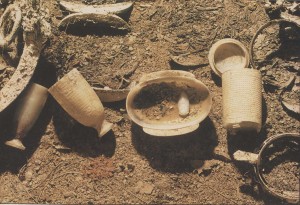Eileen Lam
Research Fellow of the Art Institute of Chicago
A Case Study on Jade Imitation:
Jade Vessels from the Western Han Tomb at Shizishan in Xuzhou
Abstract:
Imitation was a prevalent and constant practice in the material world, once distinctions of value occur among various materials. There are myriad examples of imitation throughout the ancient China, such as ceramic ding tripod, wooden bi disc etc., showing that it was popular and understandable to use inexpensive material to imitate objects made of valuable primary material. Jade imitation; however, seems to be a case of an inverse of this logic.
Jade is esteemed as a premier artistic medium in China, and among jade artifacts created in early imperial times, vessels are especially sumptuous in the large quantity of raw material and extraordinary craftsmanship required to craft them. Indeed, fewer than twenty jade vessels have been excavated to date. Focusing on the Western Han tomb at Shizishan in Xuzhou, Jiangsu province (ca. 175–154 BC), the discussion seeks to explore the notion of imitation not only for its astonishing jade excavation with four jade vessels: one ear-cup, one goblet zhi, and two stem beakers; but also for the fact the ear-cup and the goblet zhi are mingled with some lacquer counterparts. By comparing substantial data from widespread sites, this paper attempts to bring to light patrons’ incentives for selecting jade as a medium for these vessels. More broadly, it will also examine the contemporary status of jade, in relation to the changes in value and position among various materials of the mortuary repertoire.
Friday, November 11, 4-6 p.m. CWAC 156
